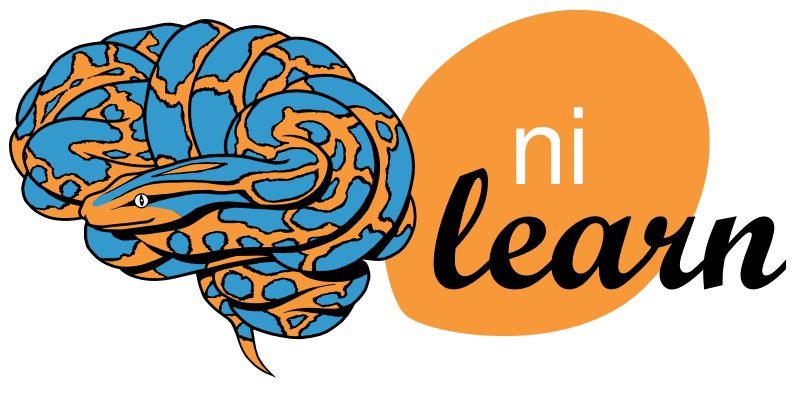Note
This page is a reference documentation. It only explains the function signature, and not how to use it. Please refer to the user guide for the big picture.
8.11.16. nilearn.plotting.plot_surf¶
- nilearn.plotting.plot_surf(surf_mesh, surf_map=None, bg_map=None, hemi='left', view='lateral', engine='matplotlib', cmap=None, symmetric_cmap=False, colorbar=False, avg_method='mean', threshold=None, alpha='auto', bg_on_data=False, darkness=1, vmin=None, vmax=None, cbar_vmin=None, cbar_vmax=None, cbar_tick_format='auto', title=None, title_font_size=18, output_file=None, axes=None, figure=None, **kwargs)[source]¶
Plotting of surfaces with optional background and data
New in version 0.3.
- Parameters
- surf_meshstr or list of two numpy.ndarray or Mesh
Surface mesh geometry, can be a file (valid formats are .gii or Freesurfer specific files such as .orig, .pial, .sphere, .white, .inflated) or a list of two Numpy arrays, the first containing the x-y-z coordinates of the mesh vertices, the second containing the indices (into coords) of the mesh faces, or a Mesh object with “coordinates” and “faces” attributes.
- surf_mapstr or numpy.ndarray, optional
Data to be displayed on the surface mesh. Can be a file (valid formats are .gii, .mgz, .nii, .nii.gz, or Freesurfer specific files such as .thickness, .area, .curv, .sulc, .annot, .label) or a Numpy array with a value for each vertex of the surf_mesh.
- bg_mapSurface data object (to be defined), optional
Background image to be plotted on the mesh underneath the surf_data in greyscale, most likely a sulcal depth map for realistic shading.
- hemi{‘left’, ‘right’}, optional
Hemisphere to display. Default=’left’.
- view{‘lateral’, ‘medial’, ‘dorsal’, ‘ventral’, ‘anterior’, ‘posterior’}, optional
View of the surface that is rendered. Default=’lateral’.
- engine{‘matplotlib’, ‘plotly’}, optional
New in version 0.9.0.
Selects which plotting engine will be used by
plot_surf. Currently, onlymatplotlibandplotlyare supported.Note
To use the
plotlyengine, you need to haveplotlyinstalled.Note
To be able to save figures to disk with the
plotlyengine, you need to havekaleidoinstalled.Warning
The
plotlyengine is new and experimental. Please report bugs that you may encounter.Default=’matplotlib’.
- cmap
matplotlib.colors.Colormap, orstr, optional The colormap to use. Either a string which is a name of a matplotlib colormap, or a matplotlib colormap object. If None, matplotlib default will be chosen.
- symmetric_cmap
bool, optional Whether to use a symmetric colormap or not.
Note
This option is currently only implemented for the
plotlyengine.New in version 0.9.0.
Default=False.
- colorbar
bool, optional If
True, display a colorbar on the right of the plots. Default=False.- avg_method{‘mean’, ‘median’, ‘min’, ‘max’, custom function}, optional
How to average vertex values to derive the face value:
mean: results in smooth boundariesmedian: results in sharp boundariesminormax: for sparse matricescustom function: You can also pass a custom function which will be executed thoughnumpy.apply_along_axis. Here is an example of a custom function:def custom_function(vertices): return vertices[0] * vertices[1] * vertices[2]
Note
This option is currently only implemented for the
matplotlibengine.Default=’mean’.
- thresholda number or None, default is None.
If None is given, the image is not thresholded. If a number is given, it is used to threshold the image, values below the threshold (in absolute value) are plotted as transparent.
- alphafloat or ‘auto’, optional
Alpha level of the mesh (not surf_data). If ‘auto’ is chosen, alpha will default to .5 when no bg_map is passed and to 1 if a bg_map is passed. Default=’auto’.
Note
This option is currently only implemented for the
matplotlibengine.- bg_on_data
bool, optional If
True, and abg_mapis specified, thesurf_datadata is multiplied by the background image, so that e.g. sulcal depth is visible beneath thesurf_data.Note
This non-uniformly changes the surf_data values according to e.g the sulcal depth.
Default=False.
- darkness
floatbetween 0 and 1, optional Specifying the darkness of the background image:
‘1’ indicates that the original values of the background are used
‘.5’ indicates that the background values are reduced by half before being applied.
Default=1.
Note
This option is currently only implemented for the
matplotlibengine.- vmin
float, optional Lower bound of the colormap. If
None, the min of the image is used. Passed tomatplotlib.pyplot.imshow.- vmax
float, optional Upper bound of the colormap. If
None, the max of the image is used. Passed tomatplotlib.pyplot.imshow.- cbar_vmin, cbar_vmaxfloat, float, optional
Lower / upper bounds for the colorbar. If None, the values will be set from the data. Default values are None.
Note
This option is currently only implemented for the
matplotlibengine.- cbar_tick_format
str, optional Controls how to format the tick labels of the colorbar. Ex: use “%%.2g” to display using scientific notation. Default=”auto” which will select:
‘%.2g’ (scientific notation) with
matplotlibengine.‘.1f’ (rounded floats) with
plotlyengine.
New in version 0.7.1.
- title
str, or None, optional The title displayed on the figure. Default=None.
- title_font_size
int, optional Size of the title font.
New in version 0.9.0.
Default=18.
- output_file
str, or None, optional The name of an image file to export the plot to. Valid extensions are .png, .pdf, .svg. If
output_fileis not None, the plot is saved to a file, and the display is closed.- axesinstance of matplotlib axes, None, optional
The axes instance to plot to. The projection must be ‘3d’ (e.g., figure, axes = plt.subplots(subplot_kw={‘projection’: ‘3d’}), where axes should be passed.). If None, a new axes is created.
Note
This option is currently only implemented for the
matplotlibengine.- figure
int, ormatplotlib.figure.Figure, or None, optional Matplotlib figure used or its number. If
Noneis given, a new figure is created.Note
This option is currently only implemented for the
matplotlibengine.
- Returns
- fig
FigureorPlotlySurfaceFigure The surface figure. If
engine='matplotlib'then aFigureis returned. Ifengine='plotly', then aPlotlySurfaceFigureis returned
- fig
See also
nilearn.datasets.fetch_surf_fsaverageFor surface data object to be used as background map for this plotting function.
nilearn.plotting.plot_surf_roiFor plotting statistical maps on brain surfaces.
nilearn.plotting.plot_surf_stat_mapfor plotting statistical maps on brain surfaces.
nilearn.surface.vol_to_surfFor info on the generation of surfaces.
